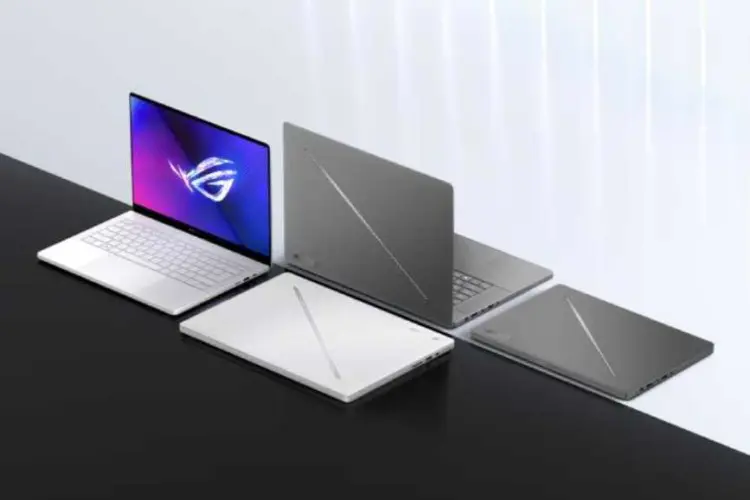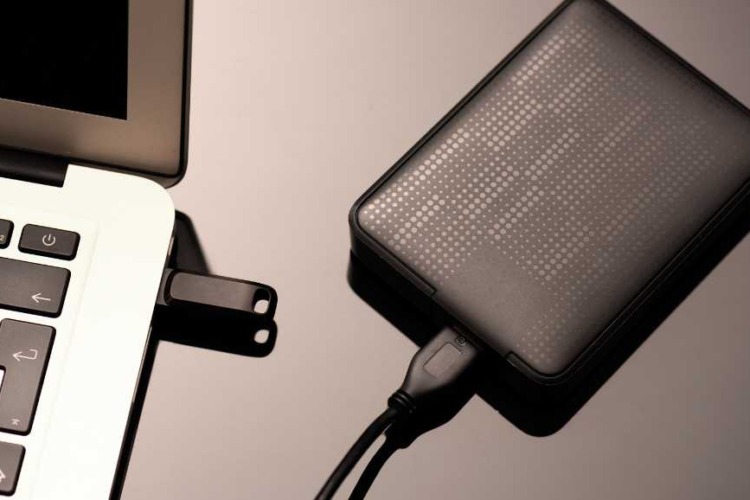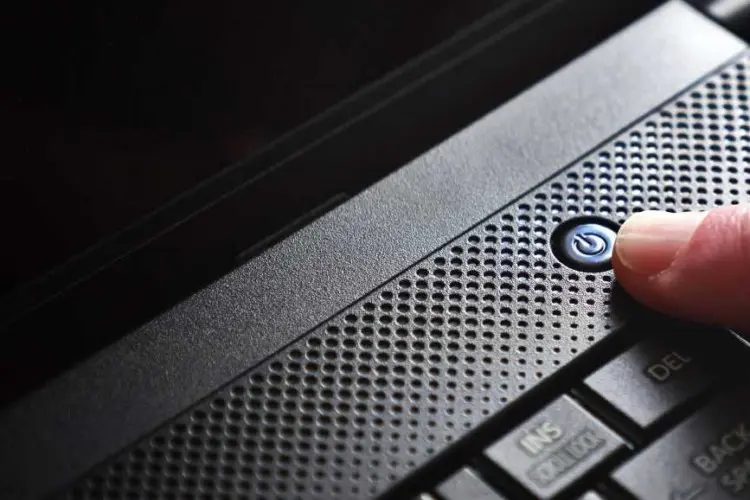
12 Signs Your Gaming Laptop Needs Professional Laptop Repair
12 Clear Signs Your Gaming Laptop Needs Repair (Before It Gets Worse) Gaming laptops are built for speed and heavy workloads. But even top-tier machines

Have you ever encountered a silent Seagate external hard drive? It’s a moment filled with dread. The device that holds your precious data refuses to spin. Understandably, this can cause a wave of panic. But, take a deep breath. You’re not alone in this.
Firstly, it’s crucial to act swiftly. A non-responsive drive needs attention immediately. However, there’s no need to fear. This guide is crafted to navigate you through the troubleshooting process. We’ll tackle the issue of an external hard drive not spinning – specifically for Seagate models.
Moreover, we’ll delve into simple checks you can perform. These steps are straightforward and often, quite revealing. Subsequently, we’ll advance into more detailed solutions. Each step is designed to edge you closer to reviving your hard drive.
Indeed, the sooner you address the problem, the better your chances of a full recovery. So, let’s embark on this journey together. By the end, you’ll have a clear understanding of what to do when faced with a Seagate external hard drive that’s not spinning. Let’s get started and bring your data back from the brink.
Table of Content:
When your Seagate external hard drive stops spinning, it’s akin to a heart that’s skipped a beat. Inside, platters need to spin for the drive to function. These platters hold your data. They work with read/write heads that hover just above their surface. Without spin, there’s no access to your files.
So, what could cause this sudden halt? Often, it’s a power issue. Sometimes, it’s a failed connection. Occasionally, it’s internal damage. Each scenario requires a unique approach. And that’s precisely what we’ll explore.
Seagate drives are known for their reliability. Yet, they’re not immune to faults. Understanding how they’re built helps us troubleshoot. Seagate integrates robust technologies in their drives. But like all tech, they have their vulnerabilities.
At the core of the spinning issue is the spindle motor. It’s responsible for the rotation of the platters. If it fails, the drive stalls. This failure can be a complex problem to solve. However, identifying it is the first step to fixing your external hard drive not spinning Seagate issue.
Furthermore, listen to your drive. Is it completely silent? Or is it trying to spin up and failing? These sounds can be diagnostic clues. They guide us towards the right fix.
In essence, a non-spinning hard drive is a sign that something’s amiss. Whether it’s a power supply issue, a failed motor, or something else, it’s a problem that needs fixing. And with the right knowledge, you can address it. Let’s move on to how you can start tackling this problem head-on.
Before diving deeper, let’s start simple. Check your power supply. Is your Seagate external hard drive getting enough juice? A weak power source can often be the culprit. Next, examine the cables. Faulty or loose cables are common issues. They’re also the easiest to fix.
Now, let’s look at the USB ports. A malfunctioning port can mimic a drive failure. Try plugging your drive into a different port. Better yet, connect it to another computer. This step can quickly rule out a port issue.
Additionally, put your ear close to the drive. Do you hear any sounds? Even a faint whirring noise is a good sign. It means the drive is trying to spin up. No sound at all might point to a power or electronic failure.
Moreover, if your drive shows up but isn’t spinning, back up your data now. This step is crucial. It ensures the safety of your files during further tests. If the drive isn’t recognized, don’t worry. We’ll address that shortly.
In summary, these initial checks are vital. They set the stage for more advanced troubleshooting. Plus, they’re quick and cost nothing. Often, they’re all you need to solve the problem. If these steps don’t fix your external hard drive not spinning Seagate issue, don’t lose hope. We have more tricks up our sleeve.

Firstly, let’s reboot. It’s a simple fix that works wonders. Turn off your computer, then turn it back on. Next, reconnect your Seagate drive. This process can reset the connection and often resolves minor glitches.
If that doesn’t work, switch things up. Try a different USB port. If there’s still no luck, connect the drive to a different computer. This step can pinpoint whether the issue lies with the drive or your computer’s hardware.
Furthermore, Seagate offers a handy tool called SeaTools. It’s designed to diagnose and fix issues with Seagate drives. Run this program. It will tell you if there are any problems with your drive that software can fix.
Also, ensure your drivers and firmware are up to date. Outdated software can lead to compatibility issues. Visit the Seagate support site for the latest updates. Installing them can often restore your drive to working order.
In conclusion, these steps are your first line of defense. They’re straightforward and can resolve the external hard drive not spinning Seagate issue without further ado. If your drive is still not spinning after these steps, it’s time to delve into more advanced troubleshooting techniques.
If basic troubleshooting hasn’t solved the issue, it’s time to delve deeper. Begin by carefully opening the external hard drive enclosure. This action should be done with caution. You’re venturing into territory that can void warranties.
Once inside, inspect the internal connections. Ensure that the cables connecting to the drive are secure. Loose connections can often be the root of the problem. Re-seat any cables if necessary. This can restore power and data flow to the drive.
Next, let’s examine the Printed Circuit Board (PCB). This board is the electronic lifeline of your drive. Look for any signs of damage or burnt areas. Such damage can halt the spinning process entirely. If you spot damage, a PCB replacement might be required.
Moreover, consider the spindle motor. If this component fails, the platters won’t spin. Testing the spindle motor can be tricky. However, if you’re comfortable with electronics, you can measure the motor’s resistance with a multimeter. High resistance can indicate a motor issue.
In summary, these advanced steps require a bit more technical know-how. They can be more invasive but are necessary to uncover the less obvious issues. If your external hard drive not spinning Seagate problem persists, it may be time to seek professional help. Remember, if you’re not confident in performing these steps, it’s best to consult with a specialist.
When you’re at a crossroads with an external hard drive not spinning Seagate, data recovery becomes a priority. It’s crucial to know your options. Fortunately, there are several paths you can take to retrieve your precious files.
If your drive powers up but doesn’t spin, software solutions might help. Data recovery programs can sometimes access drives in this state. Choose reputable software. Look for ones specifically recommended for Seagate drives.
In cases where software can’t reach your data, hardware solutions come into play. This often means sending your drive to professionals. They have the tools to possibly bypass mechanical issues and access the data directly.
For severe cases, a cleanroom intervention might be necessary. Here, specialists work in a dust-free environment. They can dismantle your drive without risking further damage. This service is typically more expensive. However, it also offers the best chance for recovery.
Always perform a cost-benefit analysis before proceeding with data recovery. Consider the value of your data versus the recovery cost. Sometimes, the expense is a small price to pay for retrieving irreplaceable files.
In conclusion, when faced with an external hard drive not spinning Seagate, you have options. From software to cleanroom recovery, choose the path that aligns with the value of your data. Remember, acting promptly increases your chances of a successful recovery.

To prevent future issues with your Seagate external hard drive not spinning, take proactive steps. Regular maintenance is key. It’s not just about fixing problems. It’s about preventing them.
Firstly, handle your drive with care. External hard drives are sensitive to shocks and drops. Always disconnect the drive safely after use. This helps avoid data corruption or damage to the drive’s internal components.
Moreover, keep your drive in a cool, dry place. Extreme temperatures and humidity can harm the drive’s mechanics. Also, ensure good ventilation. Overheating can be a silent killer for external hard drives.
Additionally, keep your software updated. This includes your operating system, drivers, and any Seagate firmware. Updates often contain fixes for known issues that could prevent your drive from spinning.
Furthermore, schedule regular check-ups using Seagate’s SeaTools. This diagnostic tool can catch issues early. Early detection means an easier fix. It can save you from data loss headaches down the road.
Lastly, always back up your data. Use multiple methods if possible. Cloud storage and another physical drive can be good options. This way, if your drive stops spinning, your data remains safe.
In conclusion, regular maintenance and care are your best defenses against a Seagate external hard drive not spinning. By following these preventive measures, you can extend the life of your drive. Plus, you’ll have peace of mind knowing your data is secure.
When your Seagate external hard drive stops spinning, it’s a wake-up call. It’s time to think about future-proofing your data. This means adopting storage solutions that are less prone to mechanical failure.
Consider solid-state drives (SSDs) as an alternative to traditional hard drives. SSDs have no moving parts. Therefore, they’re less likely to fail mechanically. They’re faster and more durable. While they can be more expensive, the investment is worth it for the reliability they offer.
Additionally, cloud storage is an excellent option for data backup. Services like Google Drive or Dropbox provide easy access to your files from anywhere. Plus, they have their own robust backup systems. This means your data is safe, even if your physical hardware fails.
Moreover, don’t put all your eggs in one basket. Use a combination of SSDs, external hard drives, and cloud storage. This diversified approach to backups can protect you from various types of data loss.
Furthermore, make regular backups a part of your routine. Schedule them. Automate them. Just make sure they happen. Regular backups can save you from the stress of data loss when hardware fails.
In conclusion, future-proofing your data is about being prepared. It’s about choosing the right technology and habits to protect your digital information. By taking these steps, you can avoid the panic that comes with an external hard drive not spinning Seagate. Secure your data, and rest easy knowing it’s safe for the future.
When you’ve tried every step and your Seagate drive still isn’t spinning, it’s time to call in the experts. Professional help is crucial, especially when you’re out of your depth. Data recovery is delicate and often requires specialized tools and environments.
Attempting to fix complex issues yourself can do more harm than good. Professionals have the right tools and cleanroom environments to prevent further damage. Moreover, they have the experience to handle various failure scenarios.
Selecting a reputable data recovery service is essential. Look for services with positive reviews and a track record of success. Ensure they have experience with Seagate drives. Also, check if they offer a “no data, no fee” policy. This can provide peace of mind.
Professional services will start with a diagnostic to assess the damage. They’ll provide you with a report and a quote. Be prepared. Recovery can be costly, but it’s often worth it for valuable data.
In conclusion, if your external hard drive not spinning Seagate issue remains unresolved, professional intervention is the next step. It’s the smart choice to avoid data loss. Trust in their expertise to give your hard drive the best chance of recovery.
If your external hard drive is spinning constantly, it could be due to several reasons. It might be performing ongoing tasks such as data indexing, background backups, or it’s being scanned by antivirus software. Continuous spinning can also be a sign that your drive is not entering the sleep mode properly due to system settings or software that’s constantly accessing the drive.
When a drive is spinning but not recognized, it suggests that the computer can supply power to the drive, but there’s a communication breakdown. This could be due to a faulty USB port, a damaged cable, corrupted drivers, or partition issues. It’s also possible that the drive’s file system is unrecognized by the operating system or the drive has some logical or hardware problem that prevents it from being detected properly.
A hard drive that spins up and then stops could be experiencing power supply issues, overheating, or it could be a sign of a failing drive motor or damaged circuit board. It might also be an indication of a severe internal failure, where the drive’s self-protection mechanism shuts it down to prevent further damage.
Hearing your hard drive spinning is normal when the disk is in use. The spinning sound is the platters rotating at high speeds (usually 5400 to 7200 RPM for standard drives) and the actuator arm moving as it reads or writes data. However, if the spinning sound is accompanied by clicking, grinding, or other unusual noises, it could indicate a potential hardware problem that should be addressed promptly to avoid data loss.
If you’re in Singapore and grappling with a Seagate external hard drive that’s not spinning, you’re in luck. The city is home to a plethora of tech repair shops ready to assist. But for a blend of expertise, efficiency, and excellent customer service, one option stands out.
Volta PC Upgrade & Repair is your ideal destination. Known for their meticulous work and customer-centric approach, they offer specialized services to breathe new life into your Seagate drive. Whether it’s a simple fix or complex data recovery, their skilled technicians are equipped to handle your needs.
Located conveniently in Singapore, Volta PC Upgrade & Repair prides itself on transparent service and trustworthy repairs. They understand the importance of your data and treat each case with the utmost care. Plus, they’re always up-to-date with the latest repair techniques, ensuring your drive is in knowledgeable hands.
Address:
Tai Seng Branch: 8 Burn Road #01-04, Trivex, Singapore 369977
Jurong Branch: Blk 132 #01-279C, Jurong Gateway Road, Singapore 6001324

12 Clear Signs Your Gaming Laptop Needs Repair (Before It Gets Worse) Gaming laptops are built for speed and heavy workloads. But even top-tier machines

How to Recover Data from a Laptop That Won’t Boot Quick Summary: How to Recover Data from a Laptop That Won’t Boot If your laptop

Best Data Recovery in Singapore (2025 Guide) Losing important files from work projects to cherished photos can be stressful. Whether it’s a hard drive crash,